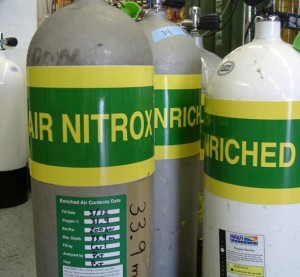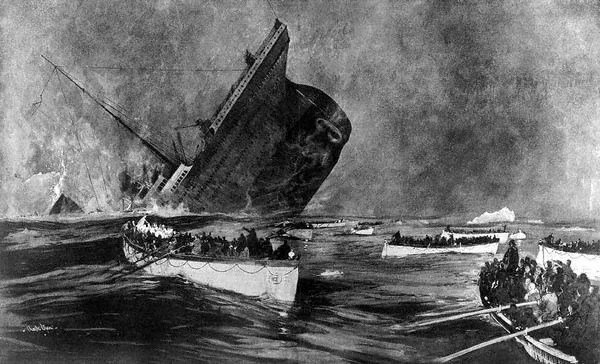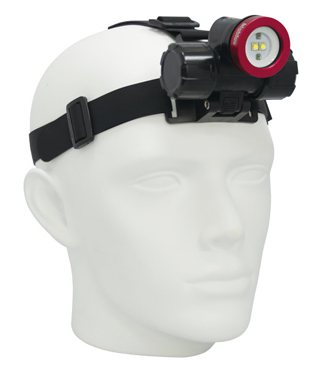While there are many benefits to diving with enriched air nitrox, there are also limitations and risks. Consider the following seven limitations and risks of diving with enriched air nitrox.
1. Enriched Air Nitrox Is Inappropriate for Deep Dives:
The use of enriched air nitrox requires special training and procedures. Many divers immediately assume that this means that enriched air nitrox is used to dive deep, but nothing could be further from the truth.
Because it contains a higher concentration of oxygen than normal air, enriched air nitrox becomes toxic at shallower depths than air does. Depending upon the percentage of oxygen, recreational divers will find that enriched air nitrox is most beneficial at intermediate depths, for example 110 – 60 feet.
2. Enriched Air Nitrox Increases the Risk of Oxygen Toxicity:
Oxygen toxicity occurs when divers are exposed to excessively high concentrations (or partial pressures) of oxygen. One dangerous symptom of oxygen toxicity is uncontrollable convulsions, which in diving usually leads to loss of the regulator and death by drowning. To reduce the risk of oxygen toxicity when using enriched air nitrox, scuba divers must monitor both their depth and total exposure to oxygen over a series of dives. Because an individual diver’s tolerance to elevated concentrations of oxygen varies, training organizations set extremely conservative limitations for depth and oxygen exposure time when using enriched air nitrox.
A diver who carefully follows these conservative rules has little reason to fear oxygen toxicity.
3. Enriched Air Nitrox Requires the Use of Special Gear:
A scuba diver who uses enriched air nitrox is responsible for personally analyzing the mixture of oxygen and nitrogen in his scuba tank using an oxygen analyzer. Many dive shops that offer enriched air nitrox allow divers to borrow the shop’s analyzer, but serious enriched air divers will find it beneficial to own an oxygen analyzers. In addition, most areas of the world require dedicated enriched air nitrox scuba tanks, which must be decorated with proper decals. Dive computers that can be programmed for use with enriched air nitrox are also recommended. Recreational divers using enriched air nitrox mixtures of 40% oxygen or less can use their everyday regulators, but those engaging in technical diving with higher concentrations of oxygen must take special precautions.
4. The Risk of Explosion When Using Enriched Air Nitrox:
In general, recreational divers who use enriched air nitrox containing 40% oxygen or less do not need to worry much about the risk of explosion. However, because the use of enriched air nitrox involves the manipulation of gasses containing higher percentages of oxygen (an extremely flammable and explosive gas) than normal air, some precautions are necessary. Pure oxygen is often used when mixing enriched air nitrox. Oxygen is either added directly to the scuba tank or mixed into normal air prior to filling the tank. Any equipment that comes in contact with pure oxygen must be “oxygen clean” – meaning that special lubricants and materials must be used to avoid an explosive reaction. Mixes of enriched air nitrox that contain more than 40% oxygen can only be used with regulators and tanks that are oxygen clean.
5. Enriched Air Nitrox Is More Expensive Than Air:
To create enriched air nitrox, special procedures, analyzers, and other equipment must be purchased. Pure oxygen used for the creation of the gas can be quite expensive. For this reason, diving with enriched air nitrox usually carries an additional charge.
6. Enriched Air Nitrox Is Not Always Available:
While enriched air nitrox is becoming increasing popular in recreational diving, not all dive shops and dive destinations offer it. Consider that even though a diver enrolls in a enriched air diver certification course, purchases his own analyzer, and is willing to pay for enriched air nitrox fills, enriched air nitrox is not always available.
7. Dive Planning With Enriched Air Nitrox Is Complicated:
A diver who cannot be bothered with planning his no-decompression limit and maximum depth for a dive on air should think long and hard before pursuing a certification in enriched air nitrox. The safe use of enriched air nitrox requires more complicated dive planning than the use of air. After personally analyzing his tank, a diver must not only consider his nitrogen absorption, but the concentration (or partial pressure) of oxygen he will be exposed to and the length of that exposure. He must track the total oxygen exposure time over his entire series of dives (even if it stretches for multiple days).







Leave A Comment